 Written by ContentPowered.com
Written by ContentPowered.comFirst of all, I’m going to draw a line in the sand between two types of YouTube monetization loss.
If you have seen a loss in earnings, but you are still making money, this article is for you. Feel free to skip the first section and read on. If, on the other hand, you’re a small channel and your earnings have dried up entirely, you may have a different problem at hand.
Demonetizing Small Channels
Back in January of 2018, Google made an announcement about their partner program for YouTube. In that announcement, they decided to change the way eligibility works, and retroactively apply the new standards to everyone. What this means is that if you met the old standards, but do not meet the new standards, your ability to monetize your videos is removed. This took effect in February of 2018.
The new and current (as of this writing) minimum requirements for a YouTube channel to be monetized are: a minimum of 4,000 hours of watch time across your channel over the previous 12 months, a minimum of 1,000 subscribers, and of course all of the basic requirements to maintain an open AdSense account.
If you were one of the many thousands of small creators who now no longer meets the minimum standards required to monetize, you have two options. You can either give up and drop YouTube as part of your content production plan, or you can refocus on growing to meet the new minimum requirements. Neither of those are really the focus of this post, however, so you can read more about them elsewhere.
Incidentally, if you’ve chosen to drop YouTube and you have earned money in the past, you can claim that money even if you haven’t reached the $100 minimum payout threshold. All you need to do is close your AdSense account, and you will be paid the remaining balance, regardless of what that balance is. This is obviously not the best idea if you want to use AdSense in other ways, but if you’re otherwise just facing some lost money, you might as well claim it.
Lower Revenue from Larger Channels
If you’re a larger channel that still meets the minimums required to be a part of the YouTube partner program, and you’ve found your revenue decreasing recently, there are a few potential causes. Some of those causes might be your fault, while others are strictly caused by Google. In either case, many of the solutions are the same, so I’ll be writing more about those separately.
Perhaps the number one cause of fluctuations that aren’t your own fault is YouTube’s various “experiments” and changes they make to their algorithms. In the past few years, YouTube has acquired a bit of a negative reputation for some of their actions. They have issued broad-spectrum demonetizations on some keywords that, through a lack of nuanced interpretation, catch a lot of LGBT content. They have repeatedly sided with media conglomerates and even copyright trolls instead of people who legitimately own or fairly produce content. They even continued to monetize Alt-Right and other content promoting hate speech. This last one is one of the more recent problems, happening last year.
The problem here is that any time YouTube does something that is politically detrimental or socially unacceptable, hundreds of major and minor brands and advertisers start to pull their cast from the site. Even if you’re not the one producing the kind of sketchy content, you still suffer. Fewer advertisers means lower costs, which means lower profits for the content producers and publishers.
Things like the change to the partner program, eliminating tons of small accounts from reckoning, are aimed at increasing the overall audience quality for advertisers. The idea is that you can’t just make a small account and throw a few videos up to game the system and get ad money, you have to actually be dedicated to the platform. Since dedicated content creators gain dedicated audiences, advertisers will be better able to target those audiences than the more casual targets they used to have.
All of this is “big picture” perspective, though. Individually, a change in advertisers might make your earnings go up, or it might make them go down. Larger trends can be reflected at the individual level, but there are always exceptions to everything.
The point I’m trying to make here is that sometimes your revenue is going to drop and it’s entirely Google’s fault for stepping on some toes or getting in hot water in a way that drives advertisers away. There’s nothing you can do about this besides focus on growing enough to offset the problems. If it turns out that Google is driving away their advertisers and you’re stuck suffering for it, well, tough luck. After all, what are you going to do about it? Go to a different globally-available massive video platform you can monetize?
When It’s Your Fault
When the loss of revenue is your fault, the first thing you need to do is figure out what you’ve been doing – or not doing – recently that might have led to the loss.
Did you change your topic recently? I see this happen a lot, even when the topic change is fairly small. A popular channel focused on video games suddenly starts posting videos about opening physical puzzles, you know, like the impossible nail in the wood block. Your revenue is going to drop for two reasons, here. The first is that the new category of content is not as lucrative as the old category. Being in a less lucrative niche means you’re going to make less money. The second reason is that the videos probably aren’t going to do as well. You’ve built up your audience based on content in one niche; that’s what they want to see. When you change niches too dramatically, you end up losing your content-focused viewers. Sure, some people stick around based on your personality, but not everyone.
Did some older video drawing in views get demonetized? This happens from time to time. YouTube’s various algorithms constantly patrol content on the site and figure out what is and isn’t against their ever-changing policies. If they change their policies and then determine that one of your old videos violates them, they can demonetize the video.
I suppose this one isn’t really your fault, so much as a problem with Google’s changing algorithms and standards. You can try to stay family-friendly and within the boundaries of acceptable content, but there’s only so much you can predict the future.
Did a copyright claim come in? Yes, sometimes a copyright claim is illegitimate. There are plenty of trolls that file reasonable-looking claims just to hassle individual YouTube creators, but there are far, far more legitimate claims moving through the system at any given time. If you have a copyright claim on one of your videos, monetization for that video will go to the holder of the copyright, not to you. You can appeal this, but be prepared for it to take a while.
Did you hide or remove older videos? Any time you’re removing content from your channel, it can negatively effect your earnings. If that content was monetized and has some residual viewers coming in, you lose out on that potential revenue. Even if the content had no viewers, it was still content that made your channel look better. Maybe it was helping hold up your channel through view counts and the lower overall count has pushed you a little lower in the recommendation algorithms. Or maybe not; you never know what Google is thinking.
Are you moving in or out of seasonality? I’ve seen a few people freak out over losing revenue, when the fluctuations in revenue were solely predictable based on holidays. During each holiday, content relevant to that holiday is going to get a boost. Seasonal content more generally comes and goes. Plus, as content ages, it tends to drop off at least somewhat.
Always zoom out to look at the big picture. It’s possible that you’ve focused too much on one seasonal kind of content, to the detriment of other potential content. You’ll lose revenue when that content isn’t in season the same way a clothing store focusing on beachwear loses out in the middle of winter.
Was some of your best content supplanted by the same thing done better? Occasionally I’ve come across this, though it’s usually more of an issue with blog posts and tutorials than with video content. Still, some niches – like tutorials – can see a newer, more up to date and better produced version taking over.
This one is actually a lot harder to spot. You essentially need to figure out what of your content has taken a hit, mostly by looking at month to month view rates. See if anything dropped abruptly, rather than tapered off the way most YouTube content eventually dies. Then run searches to see if anything comes up for the keywords that should find your video. If you find something else ranking higher, that might be your problem.
There’s not much you can do about competition, unfortunately. All you can do is take the hit and continue producing better content moving forward. Competition is the nature of the beast of marketing, you just have to deal with it as best you can.
Have you slacked on the many little marketing techniques you should be using? You know, all of the tedious busywork when you upload a video. If you’re playing a game, for example, tagging the game can help your content show up in search. Adding tags, specifying a thumbnail, adding an end card: all of this helps your videos to be found, and ignoring it encourages your content to languish unseen.
Speaking of thumbnails, did you change how you have created custom thumbnails? It’s possible that some people don’t recognize your content if it doesn’t use thumbnails the way you usually use them. A change in style or branding can lose people in the transition.
How to Recover Revenue
If you’ve lost revenue, you need to take steps to get it back. The first step is to recognize and diagnose the problem, which the above should help you with.
The second step is to fix any technical errors, unwitting branding changes, technical tweaks, or laziness that has accrued. Thankfully, if you’ve just slacked off or were trying an experiment, changing things back can bring your revenue back without too much issue.
Next, you should work on increasing the quality, marketability, and volume of your videos. Make more videos, so that overall they earn you more views and thus more money. Make individual videos better, so people are more likely to stick through watching the whole things, which earns you more money. Do more keyword research and add better tags, to make your videos more visible.
The more videos you have, the more you’ll earn. As long as the baseline level of quality is acceptable and you’re not violating any rules or creating content about sensitive subjects, more is better.
And, well, if you’re subject to the whims of the Google algorithm changes and YouTube copyright patrols, you just have to adapt and keep on swimming. Well, or you can cut YouTube out of your marketing. For some businesses, this can be viable; YouTube has a stranglehold on video, but few people actually rely on video for their success. It’s better to power through, though, at least as long as there are no viable alternatives to YouTube. It’s such an investment to get into video that to cut it out entirely is a waste.
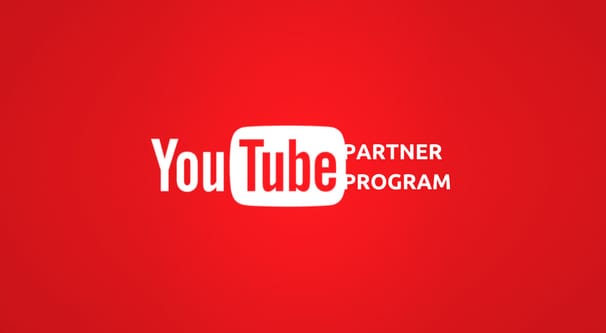
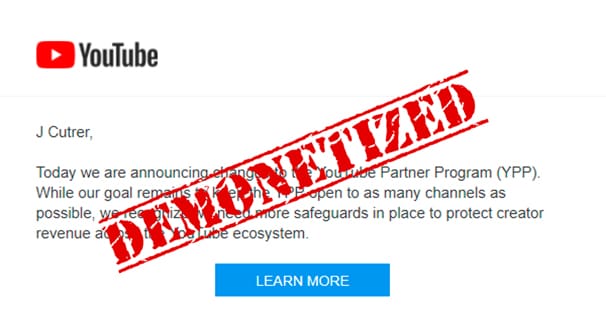
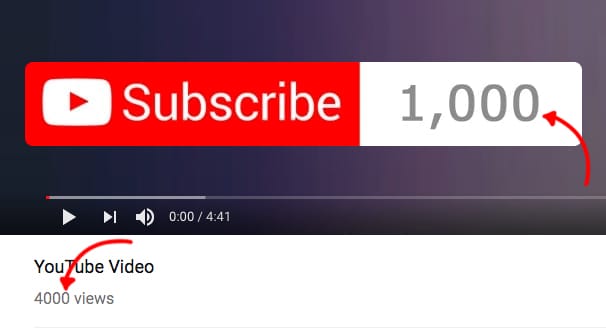

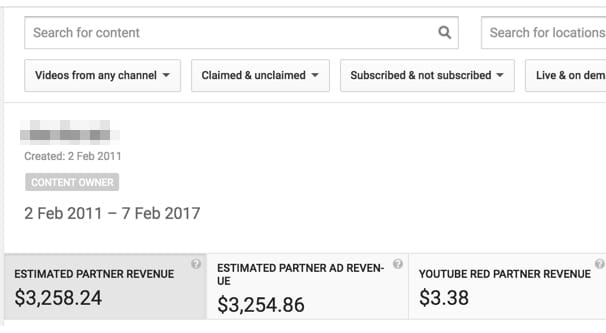
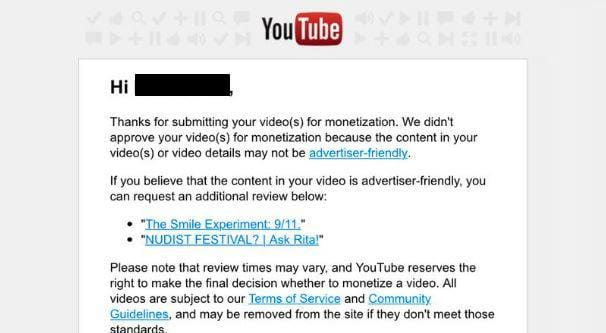
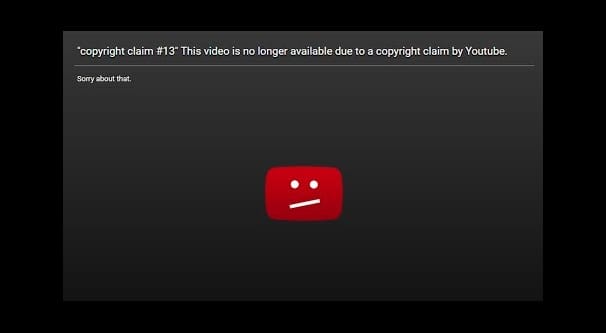

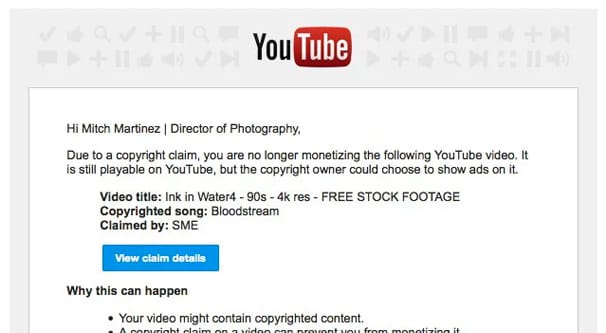
My earnings on Monday were $29.87, but the number had dropped to $24.65 by Friday. How did money disappear from the account. Isn’t it earned once it is earned?
YouTube can adjust your earnings and filter out lower quality or fake clicks. It’s natural for earnings to fluctuate like this. Your earnings are just estimates until YouTube pays you. There are a lot of fake views and clicks on YouTube so they have to be careful and filter the low quality ones to keep the quality of their network high. It’s nothing you did wrong. Keep posting great content and growing your subscriber base!